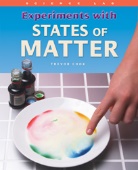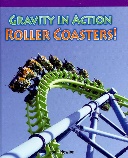-
 Some of the most famous animals in history have been horses. From George Washingtons trusty Arabian, Magnolia, to the fictional stallion Black Beauty, horses have played an important part in historical events, books, television shows, and movies for many years. Readers will discover important facts about some of the worlds most important and beloved horses. Photographs of the horses and their owners help illustrate these amazing and beautiful animals.
Some of the most famous animals in history have been horses. From George Washingtons trusty Arabian, Magnolia, to the fictional stallion Black Beauty, horses have played an important part in historical events, books, television shows, and movies for many years. Readers will discover important facts about some of the worlds most important and beloved horses. Photographs of the horses and their owners help illustrate these amazing and beautiful animals. -
 Tacos, enchiladas, tortillas, and even huevos rancheros are not unusual items in many American restaurants. Mexican food is loved all over the world, but Mexicos kitchens hold much more than these dishes. Some surprising ingredients and fascinating cultural facts are in store for readers and fledgling chefs. Mexicans use prickly pear cactus, plantains, and even chocolate in their meals. A salsa recipe at the end of the book gives young cooks a chance to create their own fiesta!
Tacos, enchiladas, tortillas, and even huevos rancheros are not unusual items in many American restaurants. Mexican food is loved all over the world, but Mexicos kitchens hold much more than these dishes. Some surprising ingredients and fascinating cultural facts are in store for readers and fledgling chefs. Mexicans use prickly pear cactus, plantains, and even chocolate in their meals. A salsa recipe at the end of the book gives young cooks a chance to create their own fiesta! -
 Todos los días la gente gasta dinero en los productos que quiere o necesita. El dinero que se gasta puede viajar alrededor del mundo y al banco de la esquina. Los cheques y las tarjetas de crédito son otra forma de gastar dinero, y este libro le da un vistazo a las diferentes formas que existen para gastar el dinero. Además, te enseña cómo hacer un presupuesto, una habilidad importante para que puedas estar seguro de tener dinero cuando lo necesites.
Todos los días la gente gasta dinero en los productos que quiere o necesita. El dinero que se gasta puede viajar alrededor del mundo y al banco de la esquina. Los cheques y las tarjetas de crédito son otra forma de gastar dinero, y este libro le da un vistazo a las diferentes formas que existen para gastar el dinero. Además, te enseña cómo hacer un presupuesto, una habilidad importante para que puedas estar seguro de tener dinero cuando lo necesites. -
 Since the terrible events of 9/11, more attention than ever has been paid to the threats and challenges posed by terrorists. Weinberg explains who the terrorists are, where they came from, what motivates them, and what, if anything, can be done to stop them. It provides a fascinating insight into how terrorist 'cells' operate and what they might do in the future. Leonard Weinberg is Foundation Professor of Political Science at the University of Nevada. He has also served as a consultant to the United Nations Office for the Prevention of Terrorism and was a recipient of the 1999 Thornton Peace Prize.
Since the terrible events of 9/11, more attention than ever has been paid to the threats and challenges posed by terrorists. Weinberg explains who the terrorists are, where they came from, what motivates them, and what, if anything, can be done to stop them. It provides a fascinating insight into how terrorist 'cells' operate and what they might do in the future. Leonard Weinberg is Foundation Professor of Political Science at the University of Nevada. He has also served as a consultant to the United Nations Office for the Prevention of Terrorism and was a recipient of the 1999 Thornton Peace Prize. -
 Fascinating farm animals fill the pages of this exciting bilingual series. Redesigned with new features, each book invites readers to discover the world of creatures that make their home on the farm. Young learners will read about each animals unique physical characteristics, behavior, and adaptations to their environment. Through fascinating facts and brilliant photographs, these books paint a vibrant picture of the incredible array of life on the farm.
Fascinating farm animals fill the pages of this exciting bilingual series. Redesigned with new features, each book invites readers to discover the world of creatures that make their home on the farm. Young learners will read about each animals unique physical characteristics, behavior, and adaptations to their environment. Through fascinating facts and brilliant photographs, these books paint a vibrant picture of the incredible array of life on the farm. -
 Amazing mountain animals fill the pages of this exciting bilingual series. Redesigned with new features, each book invites readers to discover the world of creatures that make their home in high places. Young learners will read about each animals unique physical characteristics, behavior, and adaptations to their environment. Through fascinating facts and brilliant photographs, these books paint a vibrant picture of the incredible array of animal life in the mountains.
Amazing mountain animals fill the pages of this exciting bilingual series. Redesigned with new features, each book invites readers to discover the world of creatures that make their home in high places. Young learners will read about each animals unique physical characteristics, behavior, and adaptations to their environment. Through fascinating facts and brilliant photographs, these books paint a vibrant picture of the incredible array of animal life in the mountains. -
 Great Expectations is Charles Dickens's thirteenth novel. It is his second novel, after David Copperfield, to be fully narrated in the first person. Great Expectations is a bildungsroman, or a coming-of-age novel, and it is a classic work of Victorian literature. It depicts the growth and personal development of an orphan named Pip. The novel was first published in serial form in Dickens's weekly periodical All the Year Round, from 1 December 1860 to August 1861. In October 1861, Chapman and Hall published the novel in three volumes.Dickens originally intended Great Expectations to be twice as long, but constraints imposed by the management of All the Year Round limited the novel's length. The novel is collected and dense, with a conciseness unusual for Dickens. According to G. K. Chesterton, Dickens penned Great Expectations in "the afternoon of [his] life and fame." It was the penultimate novel Dickens completed, preceding Our Mutual Friend.It is set among the marshes of Kent and in London in the early to mid-1800s. The novel contains some of Dickens most memorable scenes, including its opening, in a graveyard, when the young orphan Pip is accosted by the escaped convict, Abel Magwitch. Great Expectations is a graphic book, full of extreme imagery, poverty, prison ships ("the hulks"), barriers and chains, and fights to the death.Upon its release, Thomas Carlyle spoke of "All that Pip's nonsense." Later, George Bernard Shaw praised the novel as "All of one piece and consistently truthfull." Dickens felt Great Expectations was his best work, calling it "a very fine idea," and was very sensitive to compliments from his friends: "Bulwer, who has been, as I think you know, extraordinarily taken by the book."Great Expectations has a colourful cast that has entered popular culture: the capricious Miss Havisham, the cold and beautiful Estella, Joe the kind and generous blacksmith, the dry and sycophantic Uncle Pumblechook, Mr. Jaggers, Wemmick with his dual personality, and the eloquent and wise friend, Herbert Pocket. Throughout the narrative, typical Dickensian themes emerge: wealth and poverty, love and rejection, and the eventual triumph of good over evil. Great Expectations has become very popular and is now taught as a classic in many English classes. It has been translated into many languages and adapted many times in film and other media.
Great Expectations is Charles Dickens's thirteenth novel. It is his second novel, after David Copperfield, to be fully narrated in the first person. Great Expectations is a bildungsroman, or a coming-of-age novel, and it is a classic work of Victorian literature. It depicts the growth and personal development of an orphan named Pip. The novel was first published in serial form in Dickens's weekly periodical All the Year Round, from 1 December 1860 to August 1861. In October 1861, Chapman and Hall published the novel in three volumes.Dickens originally intended Great Expectations to be twice as long, but constraints imposed by the management of All the Year Round limited the novel's length. The novel is collected and dense, with a conciseness unusual for Dickens. According to G. K. Chesterton, Dickens penned Great Expectations in "the afternoon of [his] life and fame." It was the penultimate novel Dickens completed, preceding Our Mutual Friend.It is set among the marshes of Kent and in London in the early to mid-1800s. The novel contains some of Dickens most memorable scenes, including its opening, in a graveyard, when the young orphan Pip is accosted by the escaped convict, Abel Magwitch. Great Expectations is a graphic book, full of extreme imagery, poverty, prison ships ("the hulks"), barriers and chains, and fights to the death.Upon its release, Thomas Carlyle spoke of "All that Pip's nonsense." Later, George Bernard Shaw praised the novel as "All of one piece and consistently truthfull." Dickens felt Great Expectations was his best work, calling it "a very fine idea," and was very sensitive to compliments from his friends: "Bulwer, who has been, as I think you know, extraordinarily taken by the book."Great Expectations has a colourful cast that has entered popular culture: the capricious Miss Havisham, the cold and beautiful Estella, Joe the kind and generous blacksmith, the dry and sycophantic Uncle Pumblechook, Mr. Jaggers, Wemmick with his dual personality, and the eloquent and wise friend, Herbert Pocket. Throughout the narrative, typical Dickensian themes emerge: wealth and poverty, love and rejection, and the eventual triumph of good over evil. Great Expectations has become very popular and is now taught as a classic in many English classes. It has been translated into many languages and adapted many times in film and other media.



































